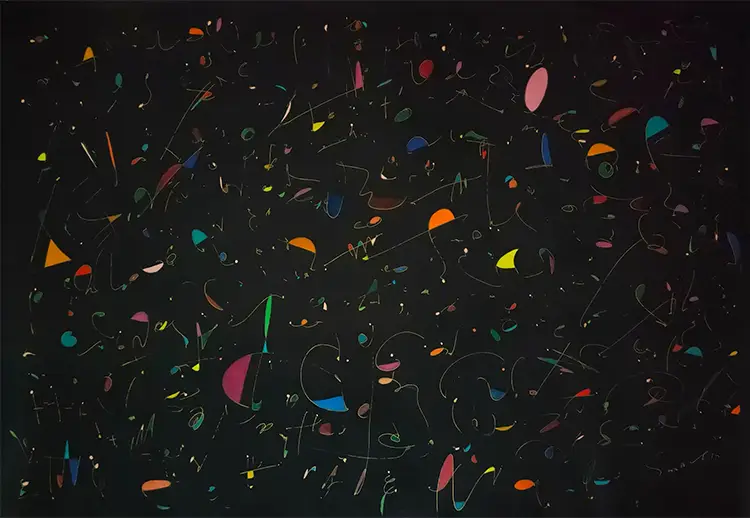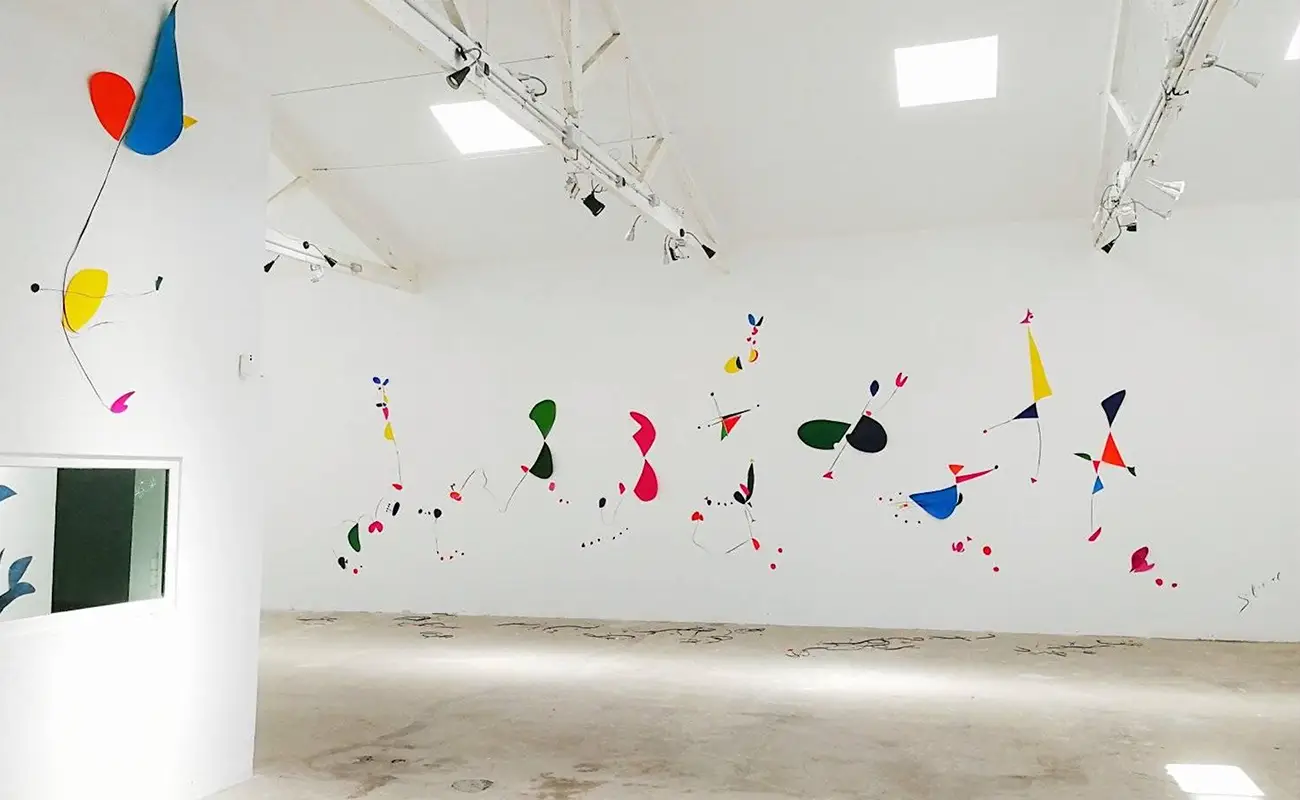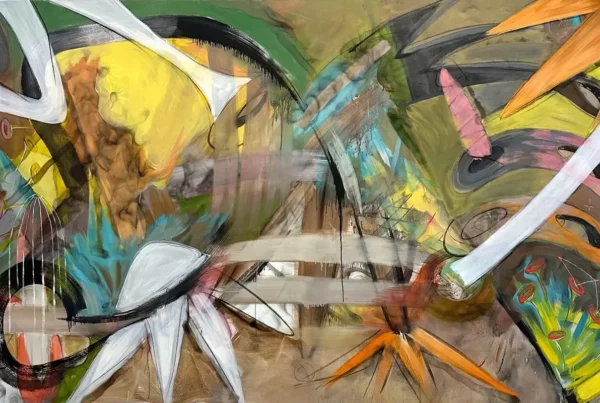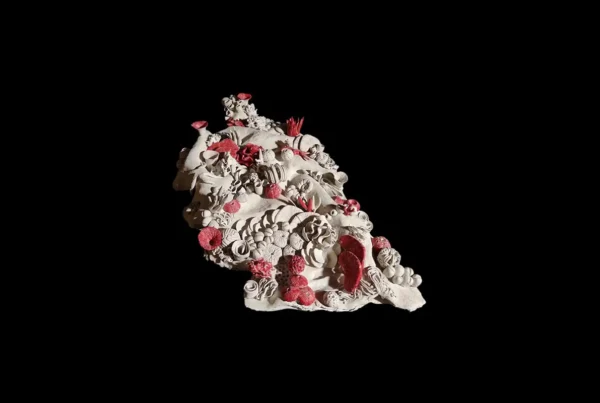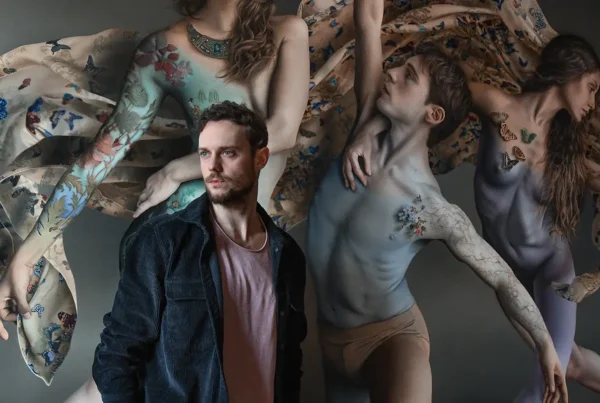Nature, Memory, and the First Brushstroke
Long before Kaoru Shibuta committed to a life of painting, a single watercolor session with his mother etched itself into his memory as a moment of both wonder and envy. Painting a wooper looper together, he was struck by the ethereal beauty of her work compared to what he saw as a messy attempt on his part. That early experience sparked something quietly enduring, a flicker that would grow into a lifelong engagement with visual expression. Although he would not formally pursue art until the age of 26, the emotional weight of that childhood memory laid the foundation for a creative journey defined by emotional resonance and sonic translation. His work does not emerge from a traditional path but from a mosaic of life experiences, each adding a distinct tone to his evolving visual vocabulary.
Shibuta’s diverse past includes roles that, on the surface, appear unrelated to painting—serving in the Self-Defense Forces, practicing as a makeup artist, managing a plant shop, and working in culinary arts. However, each chapter contributed essential insights that later surfaced in his canvases. Makeup artistry attuned him to the subtle emotional language of the face and the fleeting quality of beauty, while cooking imparted an acute sensitivity to rhythm, timing, and intuition. The rigor and discipline gained through military service instilled a powerful work ethic, and his connection to plant life fostered a deep awareness of space and organic form. These formative experiences converge in his art as a nuanced understanding of both structure and improvisation, a balance that reflects the complexity of human experience and the natural world.
His upbringing in the expansive landscapes of Hokkaido left an indelible impression on his creative lens. Surrounded by fields, forests, and changing skies, Shibuta developed a sensibility attuned to subtle shifts in light and movement. He describes nature not merely as an influence but as a composer—offering rhythms and harmonies that are often overlooked. Wind, rain, and sunlight each hold their own voice, and he strives to visualize their inaudible symphony. The result is a body of work that feels both spontaneous and composed, a meditation on the dialogue between internal sensation and external environment. For Shibuta, nature is not a subject to be depicted but a collaborator whose rhythm he attempts to echo through color and form.
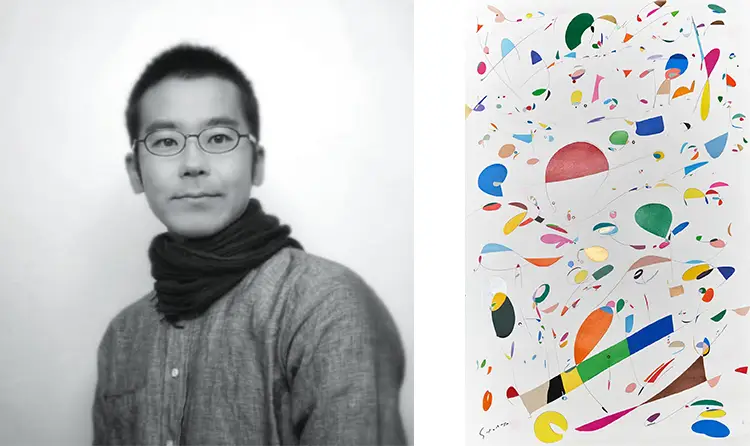
Kaoru Shibuta: Composing in Color
The core of Shibuta’s artistic philosophy lies in his belief that music can be transformed into a visual language—an act of sensory translation that bypasses literal representation in favor of emotional truth. His process begins not with the brush, but with listening: immersing himself fully in a piece of music until he can feel its energy and cadence within his own body. Whether it’s the structured beauty of Bach, the emotive storm of Beethoven, or the cascading precision of Ingrid Fujiko Heming’s rendition of “La Campanella,” Shibuta channels what he hears into sketches of feeling rather than form. From there, he builds compositions that respond to rhythm and dynamics, layering paint like musical phrasing. Each line and hue becomes a note in a silent score.
One of the most compelling examples of this practice is his painting based on “La Campanella,” where the nimble agility of the piano is echoed in fluid, sweeping motions and vibrant, interwoven colors. Shibuta resists the idea of directly illustrating music; instead, he seeks to reveal its emotional architecture. His aim is not to render the music visible but to allow viewers to feel it through visual cues. Mozart’s ethereal elegance, Beethoven’s philosophical gravity, and the sacred improvisation of jazz all find new life on his canvases. In Shibuta’s hands, the act of painting becomes a kind of parallel composition, a medium where sound is reborn as movement and light.
His exhibition “Cosmically,” held at Tra Transit Art Hub Osaka, explored this concept in immersive depth. Each work in the show was anchored in a specific musical composition, ranging from classical scores to environmental soundscapes and live jazz. The variety of materials—oil, acrylic, tempera, and washi paper—allowed for different textures and resonances, echoing the tonal diversity of the pieces that inspired them. Rather than arranging the works as static objects, Shibuta curated them as if orchestrating a sonic environment, where each painting was both a visual statement and part of a broader acoustic vision. Every element was considered with intention, mirroring the structure of a musical score and inviting viewers to navigate a space suspended between audio and image.
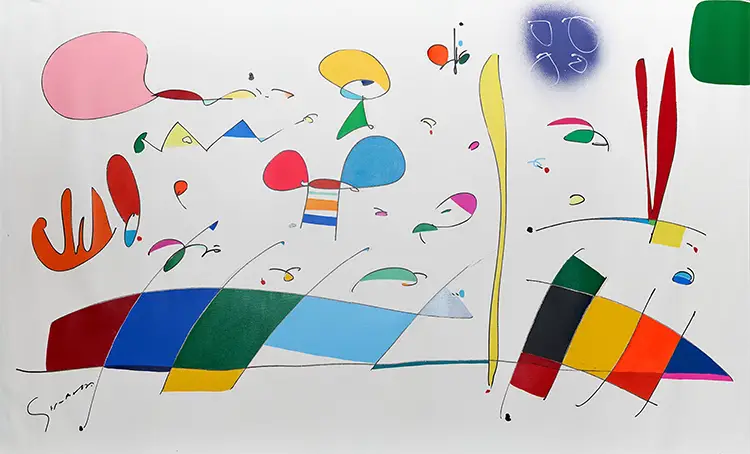
Sonic Geography and Cultural Frequencies
Shibuta’s international residencies have been instrumental in shaping his evolving artistic language, each destination offering a new frequency of sound and sight. In Barcelona, a collaborative live painting with an African jazz musician became a study in immediacy and instinct, a performance as much as a painting. India, with its kaleidoscope of colors and percussive rhythms, challenged his use of palette and awakened a more vibrant approach to tone. Russia, the United States, and other cultural landscapes each introduced different visual grammars and sonic traditions that expanded his perceptual range. These cross-cultural encounters have not only enriched his technical practice but reinforced his conviction in art as a universal language.
Rather than simply absorbing influences, Shibuta integrates them into a broader exploration of shared humanity. His work becomes a visual response to localized soundscapes and the emotional weight carried within them. Whether translating the mood of a street performance in New Orleans or the stillness of a rural Indian morning, he filters these moments through his own interpretive lens. The resulting pieces feel rooted in place yet speak across borders. His time abroad has led him to see music and visual art as cultural mirrors—distinct in expression yet fundamentally connected in their capacity to communicate beyond words.
Specific works like “Le Nozze di Figaro” and “Jeunehomme 2012–2020” illustrate the synthesis of these ideas. The former mirrors the opera’s theatrical dynamism with intersecting color fields that evoke playful tension and lyrical movement. The latter, shaped over eight years, serves as a deeply introspective journey through memory and personal transformation, inspired by a Mozart piano concerto but layered with emotional resonance from his own life. These are not static tributes to musical compositions; they are ongoing dialogues between Shibuta’s internal growth and the external forces of sound and environment. Through these paintings, he creates visual experiences that allow viewers to listen with their eyes.
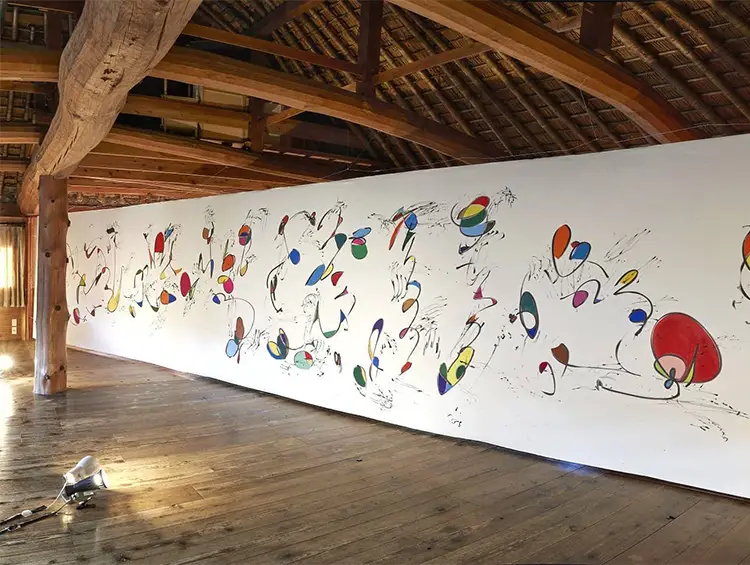
Kaoru Shibuta: Between Silence and Resonance
At the intersection of Eastern minimalism and Western abstraction, Shibuta’s technique emerges as a delicate negotiation of heritage and innovation. His Japanese upbringing instilled in him an appreciation for quietude, imperfection, and the expressive potential of negative space. Simultaneously, his admiration for Western artists like Kandinsky, Miró, and Cy Twombly introduced a more spontaneous, intuitive approach to mark-making. Rather than choosing between these traditions, Shibuta forges a synthesis—allowing the meditative calm of ink wash aesthetics to converse with the explosive energy of modernist abstraction. This cross-cultural fluency allows him to compose pieces that are both serene and expressive, tightly structured yet emotionally raw.
His collaborative projects further extend his commitment to connection and experimentation. One notable example involves translating songs by local musicians into large-scale murals—situating art in public spaces where it becomes part of everyday life. These works are not just visual responses but communal acts of listening, shaped by dialogue with sound, place, and people. The murals often unfold organically on site, capturing the tempo of their environment and creating shared experiences that transcend linguistic and cultural boundaries. This openness to collaboration reflects his broader belief in art as an inclusive, participatory act rather than a solitary performance.
Currently, Shibuta’s energy is directed toward global projects that continue to stretch the possibilities of remote collaboration and visual storytelling. He is contributing to a mail-based mural initiative with the Elisabeth Jones Art Center in the U.S. and participating in a virtual residency with SPAR in St. Petersburg, sending works across continents to form parts of larger communal narratives. His aim is not just to showcase individual pieces but to contribute to a global network of visual-music correspondences. Amid this constant motion, he remains grounded by the same philosophy that first moved him as a child: to listen deeply, create with intention, and allow each brushstroke to carry the echo of a note, a place, a moment.
Shibuta’s evolving practice continues to resonate across borders, both conceptually and geographically. From this year through next, his works will be presented on international stages, marking a significant chapter in his artistic journey. Audiences will have the opportunity to engage with his distinctive visual language at Larnaca Biennale 2025, Florence Biennale 2025, and the prestigious Venice Art Biennale 2026. Additionally, the upcoming solo exhibition Kaoru Shibuta: Between Silence and Resonance at ART:1 New Museum in 2026 will offer a deeper exploration of his meditative yet dynamic approach. Through these appearances, Shibuta reaffirms his role as a bridge between cultures—an artist attuned not only to the spaces between sound and silence but also to the spaces between people.
